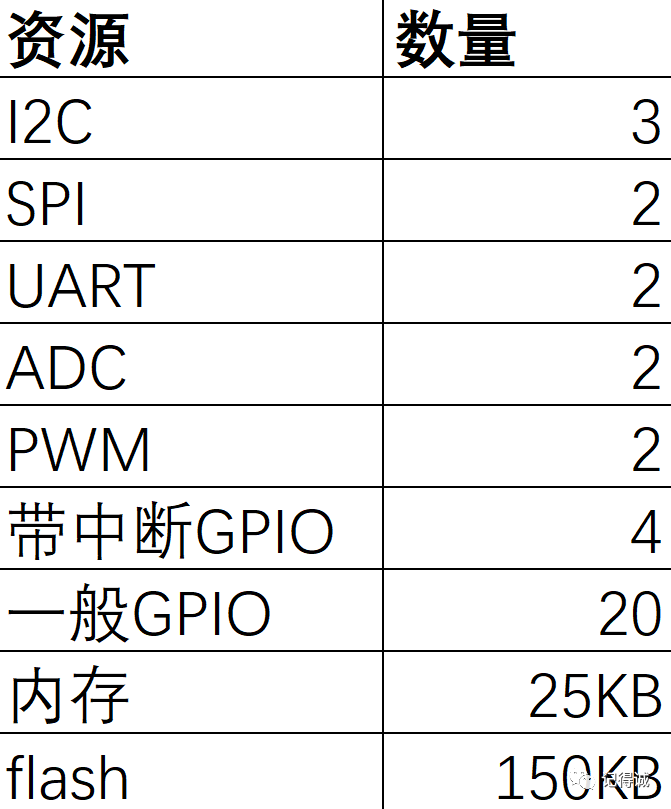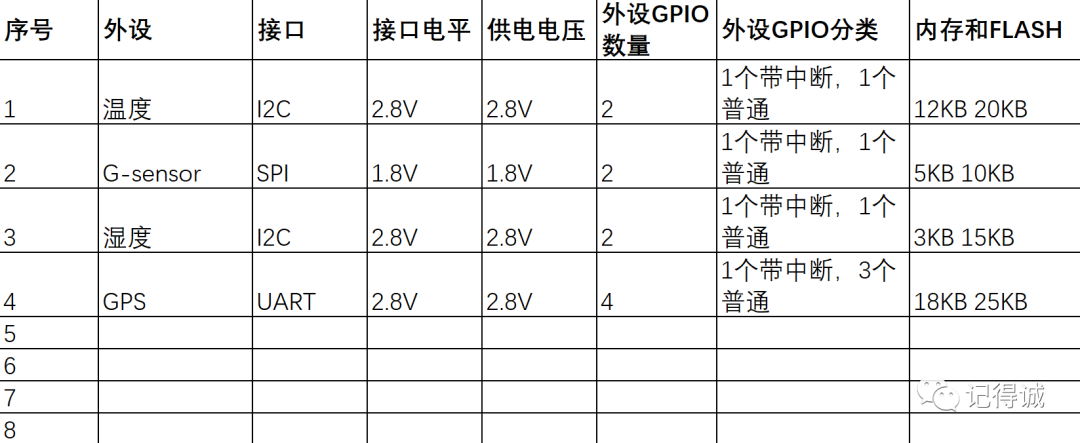In today’s article, let’s discuss how to choose an MCU.
Let me share my thought process.
If a system has multiple MCUs, we need to allocate them properly, for example, temperature sensor on MCU #1, Bluetooth on MCU #2, etc.
2. Determine the communication interfaces of the peripherals
Some peripherals support multiple interfaces, such as I2C and SPI. We need to decide on the interface based on the data volume, development workload, past product experience, product definition, power consumption, and other factors.
3. Determine the voltage levels of the communication interfaces
For certain peripherals, the communication interface voltage is not referenced to the power supply voltage. For instance, if powered at 2.8V, the communication interface might be at 1.8V, which defines the voltage for the chip’s VDDIO. I2C depends on the external pull-up source voltage, etc. These must be clarified first.
4. Determine the power supply range for the peripherals
Some peripherals have very low current, and the supply voltage matches that of the MCU, allowing direct IO driving, such as a G-sensor.
For some peripherals, the voltage needs to be converted using a power chip, in which case we should consider adding GPIO (power control pins).
5. Determine the number of GPIOs needed for the peripherals
We should roughly determine this based on the circuit in the specifications, such as whether the peripheral’s power needs to be controlled, interrupt pins, wake-up pins, whether level shifting is needed, and whether GPIO enabling control is required for level shifting.
6. Determine the types of GPIOs needed
Identify which can use general GPIOs, which need interrupt-capable GPIOs, and which can be configured as PWM, etc.
7. Determine the number of ADCs required
For example, for battery voltage detection, ID recognition, etc.
8. Confirm multiple slave devices for I2C peripherals
I2C supports one master and multiple slaves. We need to determine which peripherals are connected under the same I2C and check for address conflicts.
9. Estimate memory and flash size used by peripherals
Seek help from the manufacturer in advance regarding the approximate memory and flash size occupied by each peripheral. This is very important to avoid awkward situations later.
Based on the above nine points, we can organize a table as follows.
Summarizing the above data forms a resource table like the one below, making the selection process quite easy.

Choosing an MCU is relatively straightforward when there are few peripherals. However, as the number of peripherals increases and the interfaces become complex, the selection process becomes more challenging, involving cost, power consumption, memory, flash, procurement difficulty, upgrades, and other factors.When multiple variables are present, it’s best to use data for a more intuitive comparison.
 Disclaimer:This article is authorized by the author and is reproduced from “Remember to be Honest“, copyright belongs to the author. If there is any infringement, please contact us for removal!
Disclaimer:This article is authorized by the author and is reproduced from “Remember to be Honest“, copyright belongs to the author. If there is any infringement, please contact us for removal!
❤「If useful, please share」❤
👇Click Follow, Technology valuable content delivered on time! 👇
-
What is the relationship between Fourier Transform, Laplace Transform, and Z Transform? Why perform these transforms?
-
Those once-popular microcontrollers~
-
Can you imagine a Bluetooth chip costing less than 2 yuan?
-
Why do domestic chips also use “datasheet” in English?
-
The fascinating operational amplifier circuit
-
Why is it 50 ohms???
-
The most detailed basics of diodes
-
What is a BSP engineer?


 Disclaimer:This article is authorized by the author and is reproduced from “Remember to be Honest“, copyright belongs to the author. If there is any infringement, please contact us for removal!
Disclaimer:This article is authorized by the author and is reproduced from “Remember to be Honest“, copyright belongs to the author. If there is any infringement, please contact us for removal!
